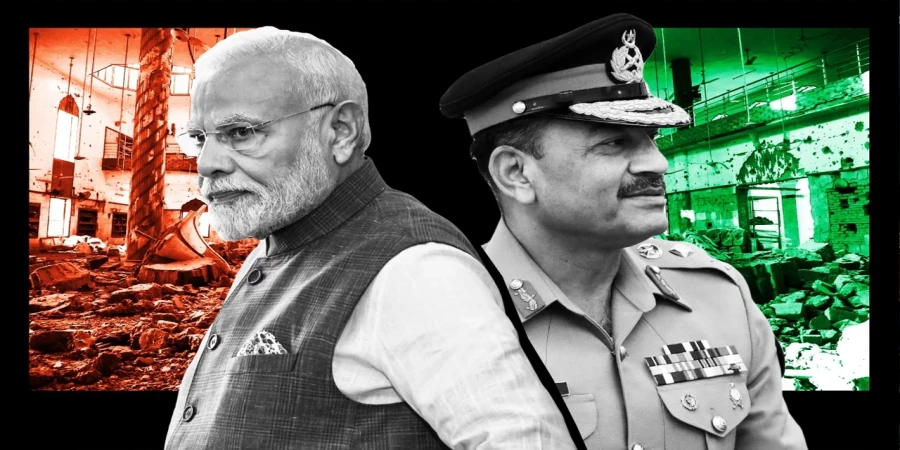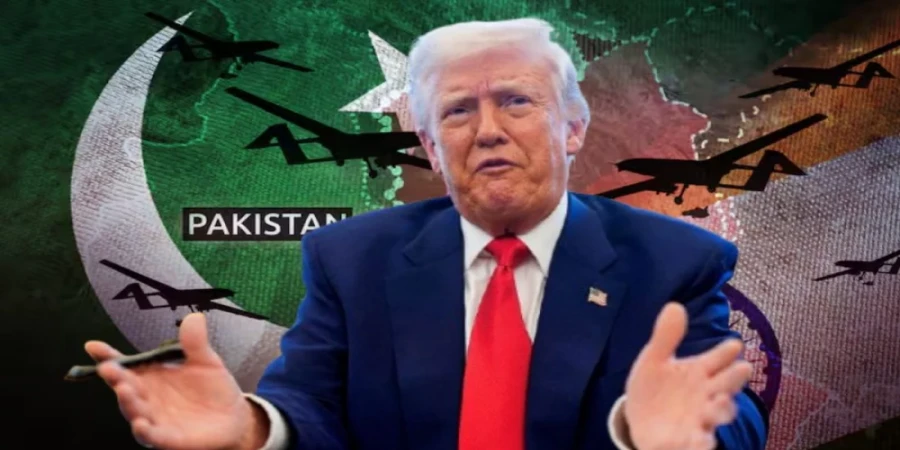
ছবি: Photo: Collected
New Delhi has claimed that Pakistan launched an unprecedented wave of drone attacks across Indian territory on the night of May 8, describing the scale of the assault as comparable to a downpour. According to Indian defense sources cited by the Times of India, approximately 500 drones were launched towards various Indian locations, marking a significant escalation in cross-border tensions.
Indian military officials reported that these drones were spotted from the Siachen base camp in Ladakh to the Kutch region in Gujarat, covering at least 24 different areas. Out of the hundreds of drones detected, around 50 were reportedly shot down by Indian air defense guns, while another 20 were neutralized using electronic warfare tactics, specifically through the “soft kill” method.
Most of the drones, as per Indian assessments, were unarmed but equipped with cameras. These surveillance devices are believed to have been transmitting real-time footage back to ground stations across the border. Indian defense analysts interpret this as a coordinated reconnaissance attempt by Pakistan to gather strategic intelligence on military installations and troop movements.
Despite the volume and geographic spread of the drone incursion, Indian authorities assert that their air defense systems successfully countered the threat, preventing any major damage or casualties. The drones are said to have been intercepted before they could reach sensitive locations, which officials credit to improved radar coverage and quick response protocols.
Pakistan has not officially responded to these claims, and no public statements have been issued by Islamabad regarding the alleged drone activity. The absence of comment from Pakistan has left the international community waiting for clarification amid rising regional tensions.
The mass drone incident comes against the backdrop of recent military actions along the India-Pakistan border. On Tuesday, May 7, at around 1:30 AM, Indian forces reportedly launched simultaneous attacks under what they referred to as “Operation Sindoor” targeting at least nine cities within Pakistan and Pakistan-administered Kashmir. These operations were described as retaliatory strikes in response to a terrorist attack in Pahalgam, Jammu and Kashmir, which India blames on Pakistan-based operatives.
Indian sources claimed that the strikes targeted terrorist training centers and logistical hubs. On the following day, Thursday, Indian drones were again seen operating deep inside Pakistani territory, continuing the pattern of escalated aerial engagement.
In response, Pakistan reported several casualties resulting from what it described as indiscriminate drone strikes. Lieutenant General Ahmed Sharif Chaudhry, spokesperson for Pakistan’s armed forces, stated that 13 civilians were killed in the attack on Ahmadpur East in Bahawalpur. The victims included a young girl aged between two and three years, seven women, and four men. Additionally, 37 people were reportedly injured—nine of them women and the remaining 28 men.
Further intensifying the situation, Pakistan’s Inter-Services Public Relations (ISPR) claimed that its military had successfully retaliated by downing multiple Indian aircraft. According to ISPR Director General Chaudhry, Pakistani forces shot down three Rafale jets, one MiG-29, one Sukhoi aircraft, and one Heron combat drone in response to Indian aggression. These claims have not been independently verified, and Indian authorities have yet to comment on the alleged losses.
As of now, both countries appear locked in a cycle of aerial hostility, marked by accusations, military actions, and counterclaims. The rapid escalation and use of advanced drone and jet technologies have raised concerns among defense observers and international stakeholders about the potential for further conflict.
Diplomatic sources suggest that back-channel communications may already be underway to prevent further deterioration of the situation. However, with no official dialogue or ceasefire announcements, tensions remain high along the Line of Control and beyond.
The current developments reflect a sharp departure from previous patterns of cross-border skirmishes, with drones increasingly becoming central to surveillance, strategic strikes, and even symbolic shows of power. Both nations, nuclear-armed and historically adversarial, are now navigating a technologically advanced and volatile phase in their decades-old conflict.
Observers are calling for urgent de-escalation and transparency from both sides to prevent miscalculations that could lead to a broader military confrontation. For now, South Asia—and the wider world—watches with caution as events unfold.
repoter






